You may have been annoyed by recurrent comments from a certain surprisingly flammable Waterloo-region reviewer. He complains about the erasure from SF memory of women writing SF back in the 1970s—but has that reviewer ever bother to name names? Suggest books? I think not. It is time to confront the erasure directly. Forward! Excelsior!
In an attempt to keep this list to a manageable length, I will focus on women authors who first published in the 1970s. That means skipping some significant authors who were already active at the time. I also reserve the right to cheat a bit by including a few works published after the 1970s. I am also going to break this list into several installments, beginning with A through F. Which should tell you just how many women have been erased. Whole binders full of women.
Lynn Abbey
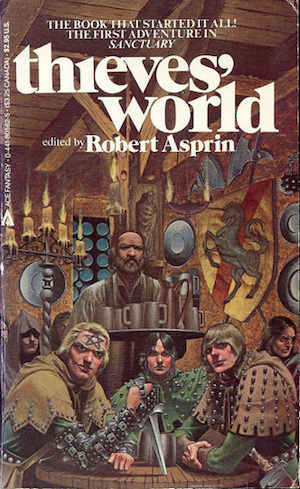
Probably the best place to begin with Abbey is “The Face of Chaos,” which is contained in the Robert Asprin-edited shared-world anthology Thieves World. Not only will that give you a feel for her fiction, it will expose you to a singularly readable sample of the Shared World universe.
Eleanor Arnason
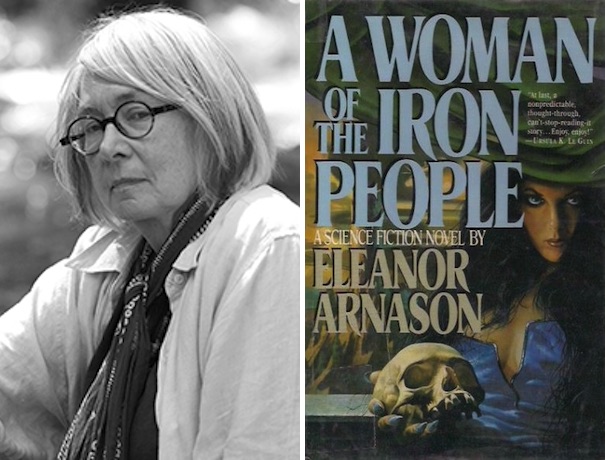
Arnason’s best-known work, for good reason, is her 1993 anthropological SF novel, A Woman of the Iron People. The book is a tale of First Contact between humans and the Iron People, who are physically humanoid but behaviorally more akin to elephants. A Woman of the Iron People shared the very first Tiptree Award with Gwyneth Jones’ The White Queen. I think Arnason’s novel is by far the better of the two books.
Octavia E. Butler
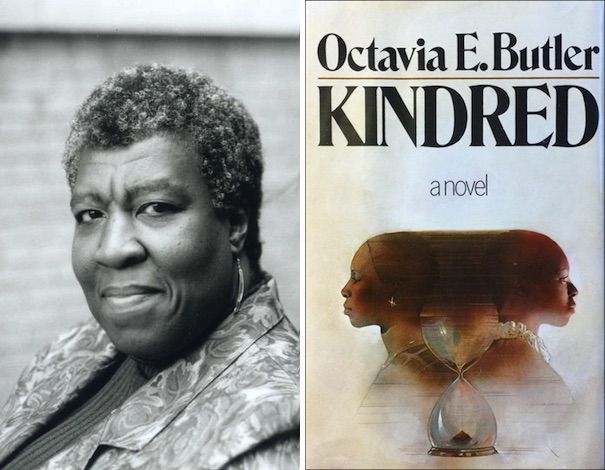
Where to begin with Butler? A couple of early missteps aside, her work was consistently strong. A standalone novel seems the best bet; while most of her books can function as standalones, many were also part of longer series. The most standalone-ish of them all is her classic novel Kindred, in which a modern African American woman finds herself transported back in time to the antebellum South.
Joy Chant
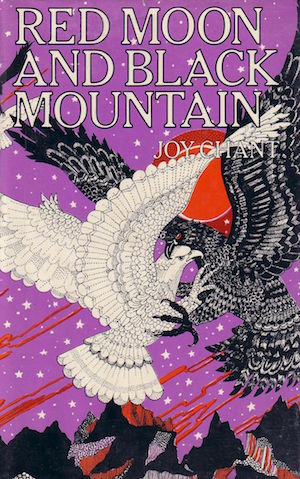
Chant’s first House of Kendreth novel, Red Moon and Black Mountain, is a secondary world fantasy novel. Three children from our world are transported to a fantasy realm akin to the worlds of Tolkien and Lewis. There they become embroiled in the battle against evil. Red Moon and Black Mountain won the 1972 Mythopoeic Fantasy Award.
Suzy McKee Charnas
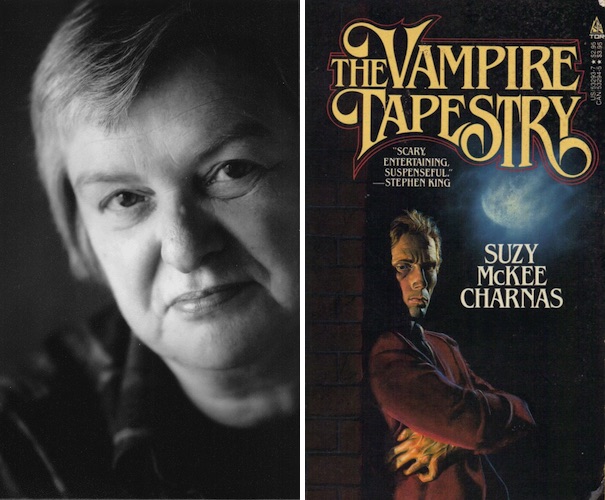
There are several excellent candidates for My First Charnas. First among them is The Vampire Tapestry. Charnas paints a compelling portrait of her solitary, cunning vampire living unnoticed amongst his prey. She does not romanticize the bloodsucker.
C.J. Cherryh
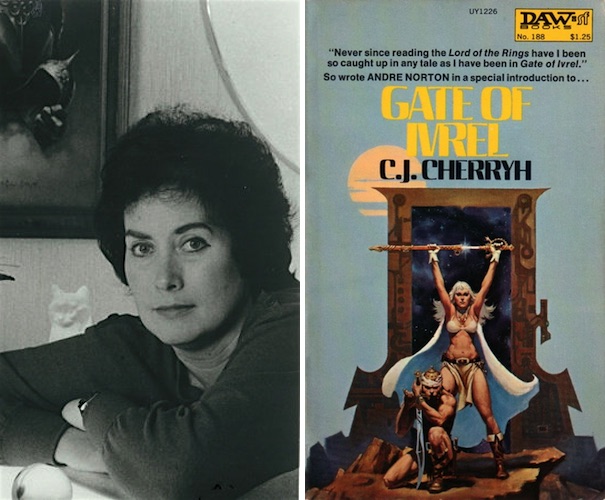
Cherryh is talented and prolific but not always accessible. For this reason, I’d suggest reading the first Morgaine novel, Gate of Ivrel, in which a headstrong young man finds himself serving as sidekick to a legendary woman struggling to preserve all space and time.
Jo Clayton
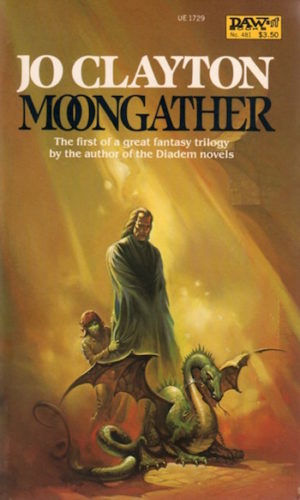
While I am fond of her Diadem novels, the Clayton I’d recommend as a starting point is Moongather, first in the Duel of Sorcery series. Moongather begins with a shocking act of betrayal, as seasoned warrior Serroi abandons her shield-mate Tayyan to a wizard. Told in two intertwined narratives, the novel eventually explains why green-skinned Serroi is so terrified of mages and what is at stake if she cannot overcome her fear.
Diane Duane
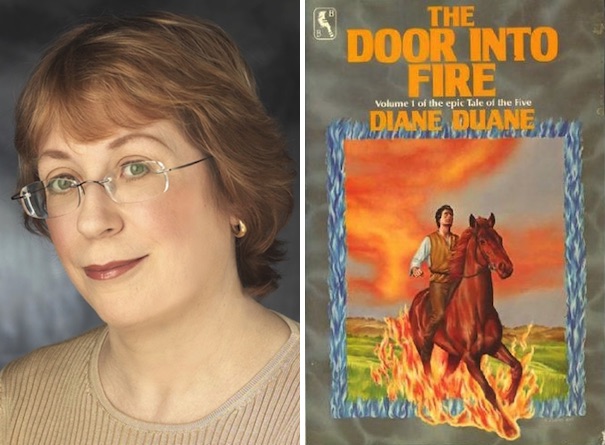
In Duane’s secondary world fantasy, The Door Into Fire, Herewiss struggles to master the Blue Flame in time to save his lover Prince Freelorn. Herewiss’ alliance with fire elemental Sunspark, a whimsical living WMD, may not prove entirely helpful. Modern readers might be surprised at how grimdark this is not, but readers back in the long long ago were more likely to notice Duane’s embrace of a range of sexualities.
Phyllis Eisenstein
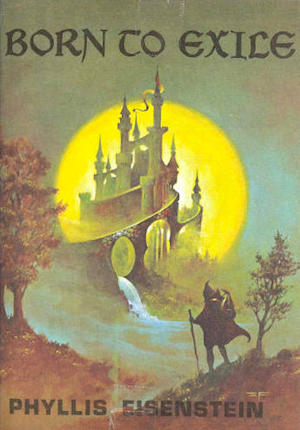 Eisenstein’s Born to Exile is the first of two published books about Alaric the Minstrel, whose ability to teleport would win him the starring role on top of a pyre if superstitious mundanes ever discovered what he can do. In this collection of short stories Alaric explores a considerable part of his world and discovers the origin of his curious knack.
Eisenstein’s Born to Exile is the first of two published books about Alaric the Minstrel, whose ability to teleport would win him the starring role on top of a pyre if superstitious mundanes ever discovered what he can do. In this collection of short stories Alaric explores a considerable part of his world and discovers the origin of his curious knack.
We live in a golden age of ebook reprints, but thus far Eisenstein has not benefited from it; however, you can find her story “The Caravan to Nowhere” in Rogues, the 2014 anthology edited by George R.R. Martin and Gardner Dozois.
Cynthia Felice
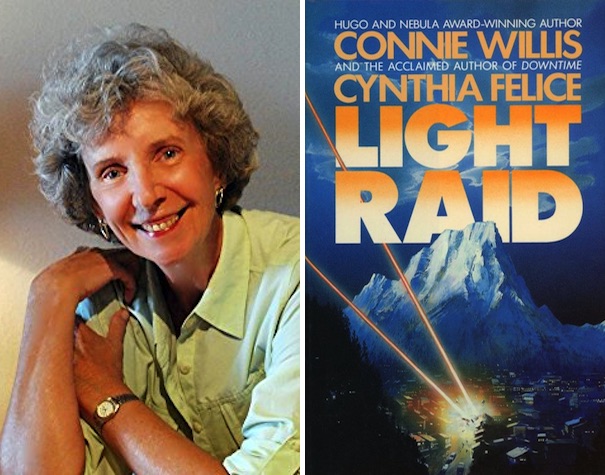
Here I run into the issue that I am not as widely read as I could be. The only Felice I’ve read is the coming-of-age thriller Light Raid, a collaboration with Connie Willis. Presumably American readers will be convinced by the novel’s depiction of evil, evil Quebec. Even though an Anglophone Canadian, I found this treatment hilariously misinformed.
She’s the author of seven books by her lonesome and three with Connie Willis—clearly a significant author but not one whose works I am informed about.
***
Sometimes my efforts to keep up with the field fall short. So it is with the following four authors:
If any of you have suggestions as to where I should begin with these authors, please leave them in comments.
In the words of Wikipedia editor TexasAndroid, prolific book reviewer and perennial Darwin Award nominee James Davis Nicoll is of “questionable notability.” His work has appeared in Publishers Weekly and Romantic Times as well as on his own websites, James Nicoll Reviews and Young People Read Old SFF (where he is assisted by editor Karen Lofstrom and web person Adrienne L. Travis). He is surprisingly flammable.










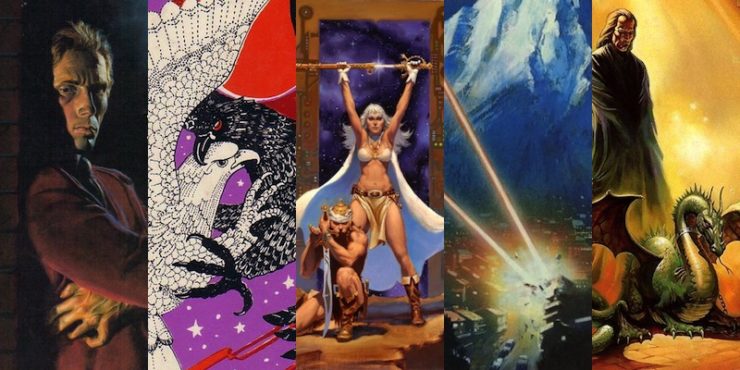
The only Dorsey work I am familiar with is Black Wine, which Jo Walton reviewed on this site.
Thank you!
I just love the Cherryh cover with it’s reversal of the standard Leg Cling pose with a dominant heroine and submissive hero.
It’s an early(ish) Michael Whelan.
No Leigh Brackett? She wrote several novels in the 1970s, not to mention a rather influential film script (yes, the film was released in 1980, but she wrote the script in the 1970s).
Ah no, sorry, I see it’s only authors first published in the 1970s.
These might help:
https://sfmistressworks.wordpress.com/2012/01/15/leviathans-deep-jayge-carr/
https://sfmistressworks.wordpress.com/2011/06/09/black-wine-candas-jane-dorsey/
https://sfmistressworks.wordpress.com/2015/07/29/godsfire-cynthia-felice/
https://sfmistressworks.wordpress.com/2016/09/28/the-sunbound-cynthia-felice/
I’m saving Bracket for “women who debuted in the 1940s.”
Hm. I thought Jayge Carr wrote the series of stories in Analog about a giant water-dwelling creature treated as a god by the land-dwellers on its planet, but looking at ISFDB, I see I’m wrong. I do remember reading some of the Carr stories like ” When Johnny Comes Marching Home Again – And Again – And Again” in Analog.
9: Who did write those stories?
@10: I was hoping you’d know! (seriously, as soon as I remember, I’ll let you know).
My introduction to Octavia Butler was when Asimov’s published “Bloodchild”, still memorable.
I picked Blood Child for my Young People Read Old SFF project. Went over reasonably well, I thought.
I really wish someone would bring the Alaric stories back into print.
I’m curious why this is erasure. Were these best selling author’s whose work has been thrown under the bus over the years? Were they genuinely great author’s who never made it big because of lack of visibility? I’m genuinely wondering, not trying to be a nuisance.
Maybe the comments section isn’t the best place for an answer, I’d be glad to see a more detailed post on the authors.
@16, Kristine Kathryn Rusch argues that the female writers of yore are in part undervalued/remembered/appreciated because each successive generation of female writers have (largely for competitive reasons) over emphasized the importance of their generation as pioneers in SF.
In part at best, though, because most writers–even the second best, if not the best–get forgotten, to our detriment as readers.
Rusch’s thesis places too little emphasis on all the guys who rewrote SF history to make their own achievements loom larger by erasing the women who came before, and all the people who curate lists of “must read” spec fic that are almost entirely beret of books by women.
Open Road Media started doing eBook editions of Jo Clayton a few years back; I wish we could get more, especially since they only released the first five Diadem books.
I’d like to add Louise Cooper to the list, but [checks ISFDB] although she first started publishing in the 70s, her major output (the Time Master trilogy and the Indigo series) started in the 1980s.
No, if she began publishing in the 1970s, I should have covered her. I am using my old Russ Meme list for these essays but clearly they are incomplete.
Over on rec.arts.sf.written, Ahasuerus points out the ISFDB tracks authors by debut year.
@16 & @17, thanks, that gives me some background I was missing.
Just looking at that ISFDB list, I’m surprised to see Sylvia Louise Engdahl started in 1970 — I remember reading her books back in school, and (to the extent I thought about it) had thought they were a bit older than that — from the 1960s, maybe.
:( I was sure she was from the 1960s, too.
The only Moyra Caldecott I would have named without looking would be her “Guardians of the Tall Stones” trilogy. (And I’m embarrassed to admit that although I have them on my shelves, I’m not entirely certain I ever read them.) But looking at the catalog of historical fiction in her Wikipedia entry, I’m somewhat astounded that I didn’t devour her entire oeuvre during my history-devouring youth. No, I take it back, there’s a simple explanation. She started publishing almost exactly when I graduated high school and left my days of systematically consuming entire library catalogs behind.
I love Phyllis Eisenstein’s Alaric books, and also Sorcerer’s Son and The Crystal Palace. I learn that there is/was a sequel to the last two, The City In Stone, which was never published. Why not?
Adaptations also play a very important role in keeping a writer’s work alive. Would anyone remember Conan but for the comics from the 1960s? Given what we now know about the toxic misogyny of Hollywood, it is reasonable to wonder whether female writers were passed over for movie adaptations more often than they should have been.
@17, the biggest problem there may have been the tendency to elevate hard science fiction at the expense of every other type of speculative fiction. Which still diminishes the exposure of female writers today, as does the promotion of adult SF over YA (although I am certainly guilty of the latter).
The Vampire Tapestry by Charnas is a great book that should be even better known than it is.
Wasn’t The City in Stone a casualty of the Meisha Merlin implosion?
Thank you for writing this, James! Much appreciated.
A note about Eleanor Arnason: _A Woman of the Iron People_ may well be her best-known work, but I would recommend any of these three works as other (and imo better) starting points:
1. Her short fairytale-ish story “The Grammarian’s Five Daughters,” one of my all-time favorite stories by anyone: (http://strangehorizons.com/fiction/the-grammarians-five-daughters/).
2. Her recent collection _Hwarhath Stories_, collecting all of her lovely and thoughtful stories about the alien Hwarhath.
3. Her novel _Ring of Swords_, about the Hwarhath interacting with humans.
Yes, The City in Stone was indeed a casualty of the Meisha Merlin implosion. I’m working on other books now, so maybe it will also appear someday from some publisher. It’s good to find out that I have not been forgotten!
Tanith Lee had her first sci-fi book The Birthgrave published in 1975! Don’t forget her!
I won’t but I have not got to L yet. My problem with Lee will be picking just one….
@9, I think that’s Allison Tellure _Lord of All It Surveys_ (Analog, June 1977), _Skysinger_ (August 1977), _Green Eyed Lady, Laughing Lady_ (March 1982). I found those stories very memorable.
Ansen Dibble got started in the 70s. I’ve only read the Kantmorie books, but they were good.
@33: That’s it! Thank you. Obviously, I found the stories memorable as well, even if the titles and author name were gone.
While I love Gate of Ivrel, it’s one of the first things Cherryh had published, and her writing style was really dense back then. Also the print in my paperback seems to have shrunk over the last few decades :-). If it doesn’t work for you, do try something a little later. Jo Walton wrote some suggestions on where to start with her, you might try those.
Cynthia Felice has at least one book back out as an ebook, both mobi and epub–DOWNTIME, which addresses among other things what happens when people move to other time streams, aging faster than friends and lovers–and how they deal with that fact when reunited.
http://bookviewcafe.com/bookstore/book/downtime/
Katherine Kurtz (Deryni) be on the list, or is her 1970 debut technically the decade of the 60s (1961-1970?)
Ann Maxwell (A Dead God Dancing, etc.) first work was in the 70s, I believe. She’s mostly known for romance fiction now but she started out with some interesting psi-themed science fiction novels circa 1975 or 1976.
Off topic, “Cynthia Felice” always seemed an extremely feline name.
Oh, I’m stupid – I didn’t see the “A to F.” I imagine you’ll have all of these covered.
Cherryh’s “not always accessible”? Well, I suppose Wave Without A Shore, perhaps…but Gate of Ivrel was my starting point as well, after I happened across a mention in Dragon Magazine (I think they had game stats of Morgaine, as well as Lynn Abbey’s Rifkind, in one article). For Candas Jane Dorsey, I would also mention her novel A Paradigm of Earth, but a lot of her output has been short fiction or poetry. I’ve been meaning to get around to Born To Exile sometime, and it’s on my to-read shelf right now…
@40 — Yes! I also came to Cherryh after a mention in Dragon Magazine, but in my case I think it was a review of Pride of Chanur.
I’ve said it before, but it’s hard to overstate the importance of the book reviews in Dragon Magazine in the early 80s in terms of leading me to favorite authors.
An excellent list so far, though I’m sure many superb women spec fiction authors are still left out.
Anxious to see the G ff. lists.
And, as a women science fiction author, I thank you.
@30, Ms Eisenstein, I was the person tasked with cleaning up the scanned text input and doing the interior layouts for that Meisha Merlin book. I really wish the publisher hadn’t died such a messy death–I know I would have loved to see sequels!
Don’t forget Mildred Downey Broxon [http://www.isfdb.org/cgi-bin/ea.cgi?1553]
*Cough*
SUSAN COOPER!
*cough*
@45. Susan Cooper’s first novel, <I>Over Sea, Under Stone</I>, was published in 1965.
@45
*cough*
Mandrake (1964)
*cough*
@13 – Do you have a link for your “Young People Read Old SFF project”?
Going through my catalog I found Mildred Downey Broxon, but she’s already been mentioned in comments. Does Pat Cadigan qualify? (She published short fiction in the ’70s, but it’s not clear to me whether it was SF.)
@48: http://youngpeoplereadoldsff.com/
This is such an amazing and wonderful list. I came of age in the 70s, and read every one of the books whose covers feature in this article. Too few people remember them, as witnessed by many discussions among sff readers of how women just didn’t write sff “back then”.
Is there any possibility that you can write an article about each one of these authors? I’d love to revisit them on a more in-depth level and catch books I’d never read. I know it would be a monumental task, but certainly a worthwhile one? Or perhaps Tor could split the lists up among their contributors so everyone would be covered, just by a number of people.
Suzette Hayden Elgin would be a great addition to this list.
Suzette Haden Elgin – first published 1969 (ISFDB)
Elgin debuted in 1969….
@45ff: Mandrake was published only in the UK; Over Sea, Under Stone did have a US edition — but her next work (which gave the series its title) didn’t come out until 1973. It’s not unlike the question of where you’d list L’Engle, who had a few mundane works early followed by a long string of rejections; would she count as a 1960’s start? I’d push Cooper for many neglected lists simply because her work is so quiet that I suspect it gets missed/ignored by a lot of people. (My personal favorite is King of Shadows, which I see doesn’t even appear in ISFDB — possibly because the only genre trope is unexplained and possibly imaginary time travel — but they list Fire, Burn! Oh well.) But I guess she’s not really within parameters.
re Cherryh recommendations: I also read her work pretty much from the beginning, and didn’t have trouble with the very compressed narration — but I can understand other people doing so. My standard recommendation for beginners is Merchanter’s Luck (1982); it’s short even for her early works, has easily-understood motives and societies, and gives an incredible payoff.
Wasn’t L’Engle’s “Wrinkle in Time” published in the 1960s? (she types without bothering to look it up, shame on her). I thought of Anne McCaffrey, too, then remembered reading that although her Pern books came out in the 1970s she’d published the first short stories about Pern in the 60s…
James, if you must pick one of Tanith Lee, why not Don’t Bite The Sun/Drinking Sapphire Wine? You can read it in the collected version “Biting the Sun.” That book has always haunted me, and I am in agony over the fact that it remains out of print… and out of e-book version, too.
Lee has been sadly forgotten. Even if some may not like her later work, the Four BEE books are some of the best character-driven storytelling within a science fiction setting, and I think they are some of the best explorations of the concept of immortality brought about by technology, the aimless search for pleasure, and what is the nature of a purpose-driven life.
@56: Yes, it was — along with a few others. (But note that aWiT was published after a few early sales and a long period of rejections.) Unlike most current authors, she didn’t return immediately to the Murray family; the next in genre, The Arm of the Starfish, was set a generation later (with the only tech advance being the research attempted in the book). I was (clumsily) analogizing to Cooper, who (like L’Engle) had a fallow period between her first publication and her first notable success.
Even if she wasn’t a 1970’s author, I remember Brackett very well–for one of the most hard-nosed feminist statements before the 2nd Wave began. None of the semi-dystopia of Consider Her Ways, or the outright clowning of Anderson or de Camp; the war leader in People of the Talisman says she’s achieved what she has ~”With my own two hands, and with what I am–not what I can trick and wheedle and whore by the ancient uses of the bedchamber.” Sets Eric John Stark (who featured in several Burroughsian Mars stories) right back, it does.
Of your four unread:
I have four books by Jayge Carr on my shelves, but the one I read more than once was Leviathan’s Deep. I’m not sure how well she will stand up to the 21st Century. Her style of sf adventure (think Dumarest, or Telzey) was a bit old-fashioned at the time (now, I wonder whether the books were in fact written years earlier and only found publication in the 1970s), and her feminist fantasy probably rather too exceptionalist for today’s readers.
Candas Jame Dorsey is probably the one of those four you should pursue most urgently. She came along just as I stopped hoovering new books, but I have several of hers unread on the strength of reading the collection Machine Sex and Other Stories.
I think Moyra Jane Caldecott is a historical novelist, at best marginal to sf and fantasy genre.
SheIla Finch wrote a number of (to my mind) forgettable sf and fantasy novels – others’ tastes may vary.
Thanks so much for this post! Hey, finally a list in which I’ve read everybody! That’s a nice change.
Don’t forget Charnas’ “Motherlines”, the start of a great trilogy.
And thirding the mention of Suzette Hayden Elgin.
“Cherryh’s ‘not always accessible’?” – I was amazed to see this assessment in the first criticism I read of Cherryh’s work (there’s not enough of it). I’d say Cherryh makes you work a bit, sometimes, to keep up with her. That’s a feature, not a bug.
Joanna Russ once wrote that women’s participation in anthologies was always about 2% – I hope that’s changing.
msb: enjoy!
I have a personal filter that excludes recent (post-1985) anthologies that are not at least 40% stories by women. It’s an enormous time saver. For example, it means I never have to bother with the Dozois Best Of, because they tend to run 20 – 30% stories by women.
Mary Jane Engh started Arslan in the ’60s first published Warner 1976. Republished by Tor in a couple of editions over the years.
“So, Arslan. Brilliant, disturbing, intense and extremely clever.”
Jo Walton Reads
In Order to Save It: M.J. Engh’s Arslan
Jo Walton
Tue Aug 23, 2011 11:01am
Engh’s first short fiction appeared in the 1960s, which is why she is not on this list of people who debuted in the 1970s.
I am surprised that Katherine Kurtz is not listed. Her debut, Deryni Rising, came out in 1970. I loved her books.
I started Cherryh with the Faded Sun trilogy, and hoovered up everything she published (and made it to the UK either as an import or UK-pubbed) up until the 90s. I started to find her writing style after then to be not very readable – the 1st person stream of conciousness. (I also had less access to bookstores at that point). I’d say her most accessible 1st read would be The Pride of Chanur and sequels – that sequence is more self-contained whereas Merchanter’s Luck is more embedded in the Alliance-Union history.
Jo Clayton I think I have most of hers, ditto Suzy Mckee Charnas, Joy Chant and Diane Duane. I’ve read some Phyllis Eisenstein but because I was missing books they got culled (maybe if I can find epubs then I’ll repurchase them).
I’ve read most of the authors on your list; in terms of Caldecott the Guardians of the Tall Stones series and The Winged Man are probably closest to genre (both are available from Smashwords).
First off, thank you for doing this important task! We definitely need to remember the classic female SFF authors!
The only Jayge Carr I’ve read is Leviathan’s Deep, which I have bought multiple times. I found it amazing on the first read, long ago, and I found it really held up well in a more recent read. I can’t tell you much about it or I’d spoil it for you, but I can’t recommend it enough!
I didn’t know that Suzy McKee Charnas wrote sci-fi. I discovered her through her YA fantasy. I read The Bronze King when I was about 9 and fell in love with it, then I tracked it down again as an adult and it held up. THEN I found out there were two other books in that series and they’re all really good. :) I’m DEFINITELY going to look up her sci-fi books!
Arrrrrrgh. Russ was first published, at least in novel form, in 1968. She and Tiptree really need to be on some sort of adjunct list to this.
I’m surprised that I haven’t seen anyone mention Diana Wynne Jones. ISFDB shows her debut year at 1970. She wrote mostly YA fantasy but also some adult fantasy. I started with her book Dogsbody and went from there. I’ve always thought that she should get as much or more credit than J. K. Rowling. Unfortunately she didn’t write series and her books were not published in beautifully laid out editions.
This is going to be fun to read through, thanks for this series.
Incidentally Connie Willis is one of my favorites. Her wry humor and treatment of time travel is really entertaining! Start with To Say Nothing Of The Dog. It’s technically the second in a series (first is Doomsday Book) but it stands alone just fine.
I’ve never understood how female authors who write intelligently are frequently labeled ‘unaccessable,’ slow, boring, &c. while male writers who do so are lauded for it.
Just the other day I was reading a review of Ursula Le Guin’s Left Hand of Darkness, a masterpiece of world-building, which criticized the first half of the book for dragging and reading far too slowly. I can’t help but feeling that, were Le Guin male, she’d be praised for capturing the glacial, majestic feel of the ice upon Gethen, and how the pacing of the first half of the book excellently matched the pacing and rhythms of the world she so excellently built and described in her text.
It’s the same with Cherryh: She excels at writing stories about the alienation of one person effectively set down, set out, or set apart in a suddenly alien environment and struggling to adapt, at speed, on the fly, in a rapidly changing, hostile environment. Her characters are constantly forced to innovate, adapt, and think, on the fly, on their feet, and frequently while running, under fire. Her novels frequently include stream-of-consciousness passages, or delve into details of the actual science involved, but somehow expecting SF & F readers to be able to cope with that is asking too much of them? Really? A male writer wouldn’t be called inaccessable for this. He’d likely be lauded. As for the ‘Dense’ writing style of the Morgaine novels, they were a genderflipped send-up of John Norman’s Gor novels and their ilk, as evidenced by the cover art. The writing style derives from them as well. I like good SF and Fantasy, regardless of the gender of the author, but I really, really hate seeing some of the best writers in the genre (or genres, now that they’ve been somewhat split,) constantly be shaded for attributes which — were they male — would no doubt be celebrated as positive and delightful qualities in their writing. We, as readers, are better than this. Or at least we should be.
@60 — Charnas’s Motherlines is only the start of a trilogy because it’s volume 2 of 4. The series starts with Walk to the End of the World.
For Lynn Abbey, I love the stand-alone novel The Guardians.
No Tannith Lee? but I loved her. Biting the sun ( Don’t bite the sun and Drinking saphire wine) Silver metal lover…aww come on
@james: I suggest you add the alphabet listing to your article title. Many are missing the fact that you just haven’t gotten that far down the alphabet yet.
@30, Phyllis Eisenstein, hello! Its always a real treat to see the authors talked about in an article actually comment on the article.
I guess I read a very different mix of authors than the ones always claiming that there were “no women” in books. I’ve always read books by women and with great female characters. But I will admit to seeing the sad lack of respect / acknowledgement / exposure to women authors in the compilations of “Greatest” lists. Especially the lists that seemed to be composed by a fan vote of whatever is getting the most noise due to a TV / movie adaptation. Hollywood doesn’t need to do another remake. They need to take a new look at older books. Give us a different story!
And I’m starting to see it ( the lack of suggested women authors) more in the hoards of “What do you recommend I read?” posts on any Facebook group that touches on reading. A waterfall of male names over an over, with a sprinkling of female authors. Thank you for adding more names to my list of “To Read & Recommend.”
Joy Chant, YES!
I remember reading “Beauty and the Opera”. Charnas was at the International Conference on the Fantastic in the Arts, and there were copies of the magazine with that story for folks to read before a discussion of the story, and a lot of us did.
I used A Reader’s Guide to Fantasy and A Reader’s Guide to Science Fiction one year, I think in the 1980s, to start filling in gaps, and a lot of your list was in there.
Don’ forget Marion Zimmer Bradley and Jane Yolen
@57, I’ve just checked iBooks, and both those Tanith Lee books are available. Go get them! :) They are my favourites too, though I love many others.
Joy Chant didn’t write much, alas, and of what she did write, I think Red Moon Black Mountain is the best. I don’t think that one is in print any more, though I could be wrong. I treasure my Puffin children’s version, which has the cover illustrated here. When adults discovered it, it got a new cover which had no connection to the novel. I studied librarianship with the same professor she had when she was doing librarianship, and he said she had told him she hadn’t read Tolkien before writing the book. So her “Aragorn and Arwen” characters were hers and coincidental! There was very much of C.S Lewis in it, indeed.
I have to ask: are we just speaking of women who were writing in the 1970s? Because few of these have actually been forgotten.
Who says women authors are being “erased”?
Its great to highlight good authors… Why make it a gendered thing? I read a good book if its a good book, doesn’t matter what gender wrote it.
If you feel that female sci fi and fantasy authors are being forgotten I think that’s pure nonsense. C.J Cherryh is the best on this first part of the list, imo.
This is like… Saying male Romance Author’s are being forgotten. Apples and oranges. Some women write in the Sci fi Fantasy realm but not nearly as many as men… Just like not many men write Romance.
And don’t forget some of the most well known fantasy authors today are women, or have we forgotten Harry Potter and JK Rowling?
This is identity politics seeping into the world of make believe… Like comics, like movies.
I’m sure I’m going to get hate for posting this.
Some other names A-F:
M Lucie Chin (1978)
Pat Cadigan (1977)
Vera Chapman (1975)
Grania Davis (1972)
An old favorite of mine, Zenna Henderson! Nobody mentions her anymore because she’s known for her stories of “The People”. It’s sold in a single book, “Ingathering” and I take my copy out and read it when I feel depressed or lose hope about life. She’s that good but alas, not prolific. But still good!
@Dubhain: I have been a huge fan of Cherryh pretty much since she started writing — but I’m reasonably sure that I noticed the density of her style long before I realized that the initials were another bit of publisher ~cowardice to hide an author’s gender. This is not a matter of gender bias; I haven’t found another author who packs as much into their prose (without using double meanings or puns a la Joyce) as Cherryh does, or who focuses so much on the most intense experiences of their characters. Many of her books are specifically about characters who win through from “terror and panic places” to a place they can stand — but that victory is never trivial or certain. And it’s all real and plausible, unlike a lot of dark-for-the-sake-of-darkness work.
Early DAW had an odd combination of “willing to publish women” and “reluctance to admit they published women.
68. wonderlulu Ever set out to write a quick piece on women sf authors of the 1970s, discover it won’t fit into a single essay, rediscover the isfdb debut by year option, greatly expand the list of authors you need to discuss, all while coming to the conclusion there needs to be at minimum a look at the 1960s, the 1950s and the early years and every time you think about it, it all just gets bigger and bigger? Me too.
I spend a couple of hours going through isfdb looking for women I missed. There are tons and I am only up to 1976.
81, I’ve heard the h at the end is also an appellation, though I don’t know if say, a Carl Janos Cherry might have run into the same difficulty.
84, you’ve taken on a task that’s perhaps inevitably going to be filled with ironic instances of failure.
I can’t say I agree with your recommendation on Cherryh though, I’d go with the Paladin or Rider at the Gate instead.
So, armed with the isfdb debut by year, I have determined I overlooked the following people in the range covered by my essay:
Diane Ackerman
Margaret J. Anderson
V. C. Andrews
Blythe Ayne
Janet Asimov
Lynne Reid Banks
Daisy Bates
Dana Martin Batory
Eva Bauche-Eppers
Nina Beachcroft
Terri Beckett
Margaret Biggs
Margaret Wander Bonanno
Bernadette Lynn Bosky
Juleen Brantingham
Mildred Downey Broxon
Meg Buxton
Pat Cadigan
Carol Cail
Moyra Caldecott
Hazel D. Campbell
Vera Chapman
M. Lucie Chin
Pamela Cleaver
Phyllis Cocker
Louise Cooper
Margaret Chilvers Cooper
Myrna Culbreath
Carol Ann Cupitt
Mary Danby
Raven Dane
Grania Davis
Ansen Dibell
J. M. Dillard
Nancy Dorer
Frances Dorer
Rikki Ducornet
Denise Dumars
Eileen Dunlop
Dorothy Edwards
Margaret Flanagan Eicher
Janice Elliott
Sylvia Louise Engdahl
Barbara Joan Eyre
Maureen Exter
Zoe Fairbairns
Sharon N. Farber
Danielle Fernandez
Rosario Ferré
The only Sheila Finch I know of started publishing in the 80s not the 70s. I really liked her Guild of Xenolinguistics stories. Is there an earlier one?
MKK
Thank you for pointing out my error. She indeed is a decade later than I have her.
I would have suggested Cuckoo’s Egg by C. J. Cherryh. It was just amazing, but sadly, doesn’t appear to be in ebook form yet.
>89
Yes, it is. It and Serpent’s Reach (another good one) form the Deep Beyond omnibus, which is available from Amazon (and I presume others) and I think directly from Closed Circle.
Barbara Hambly!
The first three of her Darwath books were published in the 70’s; lately she’s written more mystery/historical fiction books (also good) & F/SF short stories.
Her earlier F/SF works are worth checking out. The series are, in no particular order: Darwath, Sun-Cross, Windrose Chronicles, James Asher Vampire Series, Sun Wolf, Magic Time, Sisters of the Raven, Winterlands & Star Trek (TOS) Pocket Books.
I half-suspect Cherryh is really sextuplets. It’s exceedingly unlikely one person could be that prolific at that level of quality.
Will there be a G through Z list?
Great list to start, and I’ve read works by every single one of these women growing up in the seventies, with the exception of Cynthia Felice — I’ll fix that. I am a better person for all of these early influences on me as an artist.
To this day, Cherryh remains my favorite by every one of her stop-everything-and-read-the-new-Foreigner-novel diversions. I was a lonely high school SF&F reader when I spotted Michael Whelan’s cover for GATE OF IVREL (a cover and artist I still love to this day) on the spin rack in my local FL drug store in ’76. That cover turned Frazetta on his head and I had to read it. I counted out the last of my allowance money ($1.25!) to buy IVREL and I couldn’t wait to get it home. Morgaine did not disappoint, there and in the sequels and she helped get me through a tough year. Thanks, Caroline, and thanks to every single other writer here on this list.
I haven’t read any of Cynthia Felice’s solo novel work, either, although I read and loved Promised Land, another of her collaborations with Connie Willis. She did write my absolute favorite SF/Christmas short story, which sounds like damning with faint praise until you remember her collaborator Willis’s contributions to that genre. In any case, Felice’s story, Second Cousin Twice Removed, is an awful lot of fun.
I am now the proud owner of a stack of Phyllis Eisenstein paperbacks.
Lists, I am thinking. And then forward into the 1960s and the Before Times.
When you get to her, please, Oh PLEASE mention Zenna Henderson, and her People stories.
Please.
I am afraid this series covers women who began getting published in the 1970s, two decades after Henderson first saw print.
But now I am thinking about future projects.
One thing I really like about Cynthia Felice is that she writes across different genres of SF. My favorite is Promised Land, the last book she wrote with Connie Willis; it’s a lovely, immersive book that’s essentially an outback romance in space. She seems equally at home with this sort of lighter book as she is with hard SF.
In your updated list @86, Lynne Reid Banks hardly belongs. She published a play in 1956. Her first novel, The L-Shaped Room (1960) was a bestseller in the UK, filmed in 1962, and currently in print, so hardly erased. It’s social realism, not SF or fantasy.
While it’s true that women tend to be forgotten faster than men, I’m sure you could produce a longer list than @86 of men (A-F) who wrote a few stories in the 1970s and are now largely forgotten, (and probably were not much noticed even then). And its a bit silly to include Big Name Authors like C. J. Cherryh (or Virginia Andrews!) in a list of supposedly “erased” people.
Then again, I was startled to see that Pat Cadigan hasn’t published a novel (apart from a couple of tie-ins) since 1992, although she still publishes short fiction and won a Hugo in 2013 (and Synners is still in print in the UK as part of the SF Masterworks series, so not forgotten).
Sheila Finch is a former teacher of mine. I sent her your article so she can get in touch herself. Her newest website is http://sheilafinch.net/
Bruh, if I had to pick one book out of all books — it would be Cherryh’s Gate of Ivrel, or more correctly, the whole series.
If you want to launch a gender conversation — as a penis-haver, I can relate to the male sidekick’s submission to the morally pure struggle the protag Morgaine drops on his lap.
I believe there was a 2015 omnibus of the entire Morgaine series. It’s only 816 pages! Not to be confused with the earlier omnibus of the first three books.
I’m so glad you mentioned Diane Duane! She is one of my favorites. I love her Star Trek novel “Spock’s World” and her YA “Young Wizards” series, which apparently has many of the same themes as the series that starts with “The Door into Fire,” though I haven’t yet read that series… Adding to my TBR list!
I believe I have all of Jo Clayton’s books, as tattered, yellowed paperbacks. I was thrilled to start reading the comment above that “Open Road Media started doing eBook editions of Jo Clayton a few years back” and then sad to see it end with “I wish we could get more, especially since they only released the first five Diadem books.” I just did a search, and find that there are a dozen at Open Road Media, and also through Kobo. Off to shop now!
@@@@@ 71 & 81
many thanks for your insightful comments. Considering Cherryh’s Importance and excellence in the field, there seems to be a shameful lack of useful criticism of her work.
@@@@@ 104
I have the recent complete Morgaine omnibus. It’s got a nice font size and my 1970s paperbacks were falling apart.
looking forward to your subsequent lists!
CJ Cherryh is, in my opinion, one of the best current sf/f writers. While I have not read all of her books (I can’t keep up ;)), I have read a significant portion of her sf, but none of her fantasy.
Butler is brilliant, and may well be one of the relatively few sf/f authors who remain in print long after their deaths.
—
When you get to the M’s I’ll ask whatever happened to Roberta MacAvoy, whose Damiano trilogy was brilliant.
I think MacAvoy debuted in the 1980s but I have good news. She is back.
Death and Resurrection (2011)
Albatross (2017) with Nancy L. Palmer
Shimmer (2018) with Nancy L. Palmer
Mr Nicoll,
@109 That is great news. I don’t know why she seemed to vanish for a few years, and she may never share the reasons.
I don’t know either but it’s not an uncommon pattern.
One question, which I am really hesitant to ask, is how many writers, regardless of gender, first published in the 1970s, have been largely forgotten?
How many writers just publish for a few years and then stop submitting?
The good news is isfdb’s search by debut year function can at least offer some general indications of the answer. The bad news is I don’t feel like doing the leg work for the general form of the question.
112, I would say the vast majority stop at some point, given that very few authors ever get published. It’s really hard not to give up at some point.
Now that anybody can publish (on a website at least), well, perhaps it might have changed a bit, but yeah, I’m not sure anybody has done the legwork either.
Well, one thing I think we’ve seen in the past 15-20 years is the death (or near-death) of the midlist — it seems like back in the day, someone like (to use my go-to example) Jo Clayton could stay in print and publish a large number of books even if her sales on a per-title basis weren’t through the roof, but that’s not so much the case currently.
Also, availability of catalog titles has been a problem for decades. In theory, eBooks would be a way around that, but I think it’s challenging particularly for authors who were writing in the 70s & 80s because their contracts probably didn’t say anything about eBook rights, and because books from that time don’t exist in easily-digitized form.
@113,
I’ve downloaded ifsdb’s database. When I have a few hours, I’ll write some sql to see if I can answer my question. I’ll have to make some assumptions to see if there’s a difference between men and women quitting.
I remember reading that something like 95% of authors’ works go completely out of print after their deaths. Some percentage of authors first published in the 1970s will have died, and their works are out of print, and soon forgotten.
Ansen Dibell, a pen-name of Nancy Ann Dibble, had the first 3 volumes of the Kantmorie series published by DAW. Sadly the 4th & 5th volumes were only published in French and Dutch, neither of which I speak. See ISFDB: http://www.isfdb.org/cgi-bin/ea.cgi?3805
http://dianeduane.com/outofambit/a-difficult-appeal/
Diane Duane is doing a fundraiser to keep her house. Her ebooks are half price.
So far as I know Bernadette Bosky only wrote one sf story– quite a good one. I have no idea where it’s available.
I liked Jayge Carr’s work a good deal, and my favorite of her novels was LEVIATHAN’S DEEP.
By Dorsey, BLACK WINE.
Sheila Finch is best known, I think, for her Lingster stories, mostly in F&SF. READING THE BONES is a fixup novel that might be a good place to start.
(Just by the by, any definition of erasure that encompasses C. J. Cherryh and Octavia Butler seems a bit broad to me.)
For an author who really impressed me with a very few stories, I’d suggest Cynthia Bunn, particularly “And Keep Us From Our Castles”, from the August 1974 Analog (not coincidentally, the first SF magazine I ever bought).
Nancy @@@@@ 118: Bernadette Bosky’s sf story “None of the Above” was reprinted in the 1994 Year’s Best Erotica edited by Susie Bright, which appears to still be in print.
I was puzzled by her being listed as “debuting” in the 1970s, and was pleasantly surprised to discover that the ISFDB lists her poetry from small-press horror magazines like Eerie County and Nyctalops.
I am erring on the completist side because I’ve discovered the hard way authors and books I consider well known sometimes are not.
NPR had a fun podcast last week after a reporter realized that the sources they used were 30% female. NPR took a look at their interviewing history and realized they also had averaged 30% female. “Recommended sources” like “Internet sources” does tend to put people into a narrowing funnel. The reporter, after realizing the bias, took efforts to normalize the sources they used, noting that reaching 40% wasn’t much work at all and remaining at 50% isn’t really a bother.
Caroline Mullen commented that she found my early novels unmemorable and I’m happy to say I agree. I went through three different editors at Bantam in my first four years of selling books to them, and each one wanted to change what the others had agreed to. The Shaper trilogy was originally written to be YA, fantasy but yet another editor decided it should be adult SF. It obviously didn’t work. I have refused to allow those three books to be reprinted, though unfortunately I see occasional copies floating around. If you see one — kill it!
I wanted to mention a SF writer I never see mentioned who went by the name of Cristabel. She wrote four books under that name, three of which are fun and wildly romantic and a bit like gothics but on the whole original. They’re also a bit dated, but then so am I. The books are The Cruachan and the Killane, Manalacor of Veltakin, The Mortal Immortals, and The Golden Olive (I think this one is terrible). I’m pretty sure they were published in 1970, 1971, and 1972.
Someone on Amazon said they worked with her at WV Tech, so it’s definitely a woman writer.
Has anyone mentioned Doris Piserchia? https://www.google.com/search?q=doris+piserchia+books&ie=utf-8&oe=utf-8&client=firefox-b-1
Or Sydney J. Van Scyoc (first novel in the 70s, short stories until then)
I would also mention A.M. Lightner, though she started in the 60s.
@@@@@ Phyllis Eisenstein — sign me up as another who wants to read The City in Stone. I loved the first two books in the series.
All of those are familiar names. I’ve read eight of the books you list; three of them are favorites, and in two other cases there are other books by their authors that are favorites. My favorite Butler is either Mind of My Mind or Wild Seed, the first for its sense that power demands to be used, the second for its cultural richness. My favorite Cherryh, utterly no question about it, is The Pride of Chanur, which among other things is a beautiful demonstration that Cherryh understand the epic as a form (like The Anger of Achilles or The Cunning of Odysseus).
I look forward to the next segment of the alphabet.
I also would love to see more @Phyllis Eisenstein. Still have my original, and very well worn, old mass markets. Is there any chance The City in Stone will ever be published? Take my money please!
Also, I had trouble with the concept that Cherryh is considered difficult or inaccessible. I devour everything she writes. I appreciate the immersive experience every time I open one of her books, and that she assumes her readers are intelligent and can keep up with her.
Lastly, gotta give a shout out to Duane and Cooper. Made lasting impressions on my teenage self, just superb.
Now I have to catch up any go read the rest of these posts…
REPOSTING J. Kathleen Cheney’s Comment FROM HERE: https://www.tor.com/2018/02/12/fighting-erasure-women-sf-writers-of-the-1970s-part-ii/comment-page-1/#comment-722152
I would add Ansen Dibell to this list. She’s a compartively obscure author of Science Fantasy and media tie-in (under her name Nan Dibble). However, for me she was one of the most formative writers I read. Her series, The High King of Kantmorie, dealt with some truly fascinating aspects of consciousness* and cross-cultural/species interaction. Her first novel, The Pursuit of the Screamer (ignore the lurid cover), came out in 1978, followed by Circle, Crescent, Star and Summerfair.
DAW didn’t print the final two books in the series (Tidestorm Limit and The Sun of the Return), but fans can hunt them down in French or Dutch.
Anyhow, I always drop in and sing her praise when I get the chance…so here I am.
Suzy McKee Charnas was certainly thought provoking in the first two books in the Holdfast series–Walk to the End of the World and Motherlines. (Evidently they have recently become available on Kindle at Amazon.) Alienation between the sexes shrieks from the pages and was a true reflection of some of the simmering anger the women’s liberation movement (remember that phrase?) brought out of both men and women. If you didn’t live through that time its hard to believe. I got lectured for “sleeping with the enemy” from some feminists and heard some truly horrifying rape fantasies of “curing” lesbians as solving the “femNazis problem” by men. It made Charnas’ end of the world stories REALLY real.
Don’t forget Jacqueline Lichtenberg! She published the first Sime-Gen novel in 1974.
James covers Jean Lorrah, and hence some Sime/Gen stuff, in the L’s. He disqualifies Lichtenberg because of a ’60s publication, which I think would have to be “Operation High Time”, the first Sime/Gen short story, in If. (Somehow I thought novel publication was the key, but I guess not.) Anyway, Lichtenberg would have been in the L’s too.
I’m a whole year late to this post, but just wanted to say that, IMHO, The Vampire Tapestry is the greatest vampire novel of all time. Charnas achieves a very rare feat: a monster that breaks your heart.
Great list and summaries. Thank you for making it. Quick question about terminology… shouldn’t Red Moon, Black Mountain be properly described as a portal fantasy (like cs Lewis books) as opposed to a secondary fantasy world (like Tolkien’s works)?
I don’t mean to nitpick. It’s just that I use portal vs secondary fantasy to convey something very specific about setting, and am curious about people’s usage of the terms.